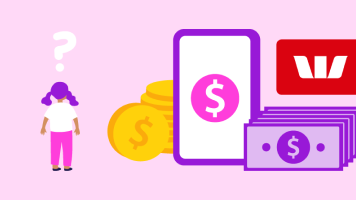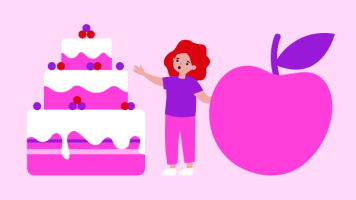All about Australian money
A fun introduction to Australian money, why it looks (and feels) like it does, and how to tell how much it’s worth.
What we'll teach you:
- Types of Australian coins and notes
- What different coins and notes look like
- Understanding dollars and cents
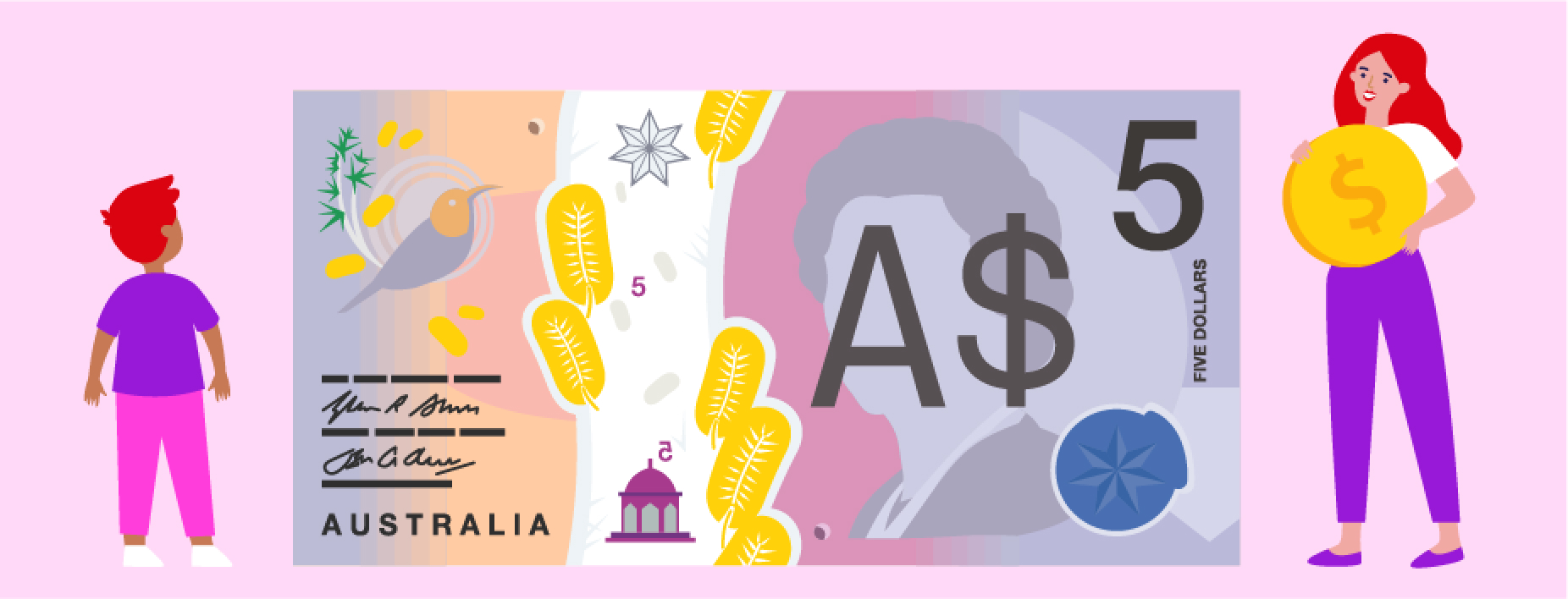
Why do we use money?
Money is what we use to pay for the items and services we need and want. In Australia, money comes in coins and notes.
The Royal Australian Mint makes coins, and the Reserve Bank of Australia prints notes.
Types of Australian coins and notes
There are six types of Australian coins:
- 5 cents
- 10 cents
- 20 cents
- 50 cents
- 1 dollar
- 2 dollar
What Australian coins look like
Each Australian coin has a heads side and a tails side.
The heads side has a picture of Queen Elizabeth II and the year it was made. Newer coins will have a picture of King Charles III.
The tails side has a special Australian design and shows the amount that the coin is worth. Each coin has a different design.
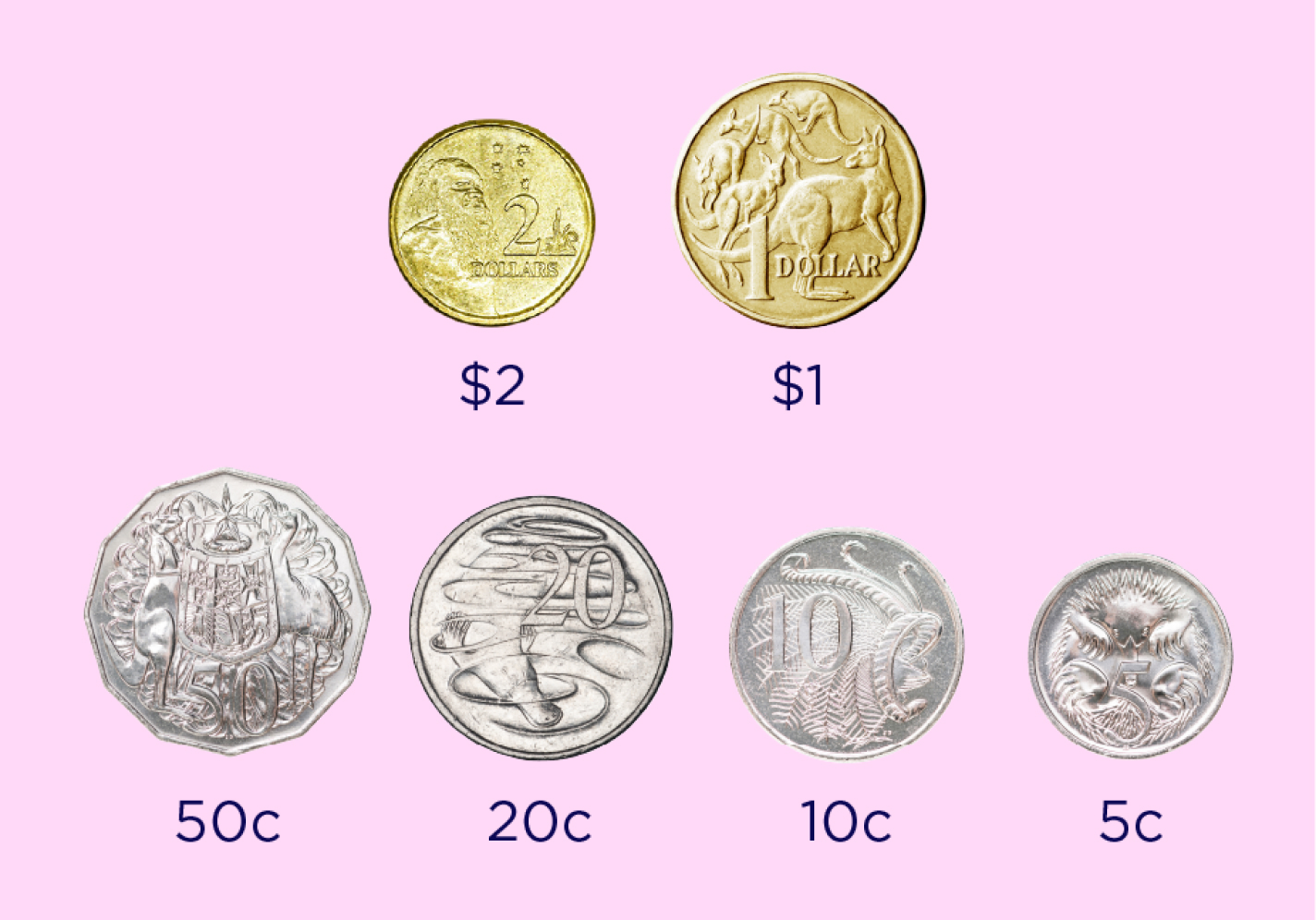
Fun facts about Australian coins
- Each coin is a different size, so that you can feel the difference when holding them. This means you can feel the difference between coins without looking!
- The 50-cent coin has 12 flat sides around its edge. It used to be a circle, but the Mint changed it because it was too similar to the 20-cent coin!
- There used to be one- and two-cent coins, but they were removed in 1992. The five-cent coin is now the smallest coin and the lowest denomination, or value.
- The 5, 10, 20, and 50-cent coins are a silver colour, and the one- and two-dollar coins are a gold colour. But none of the coins are actually made of silver or gold! They are made from metals such as copper, aluminium, and nickel.
What Australian notes look like
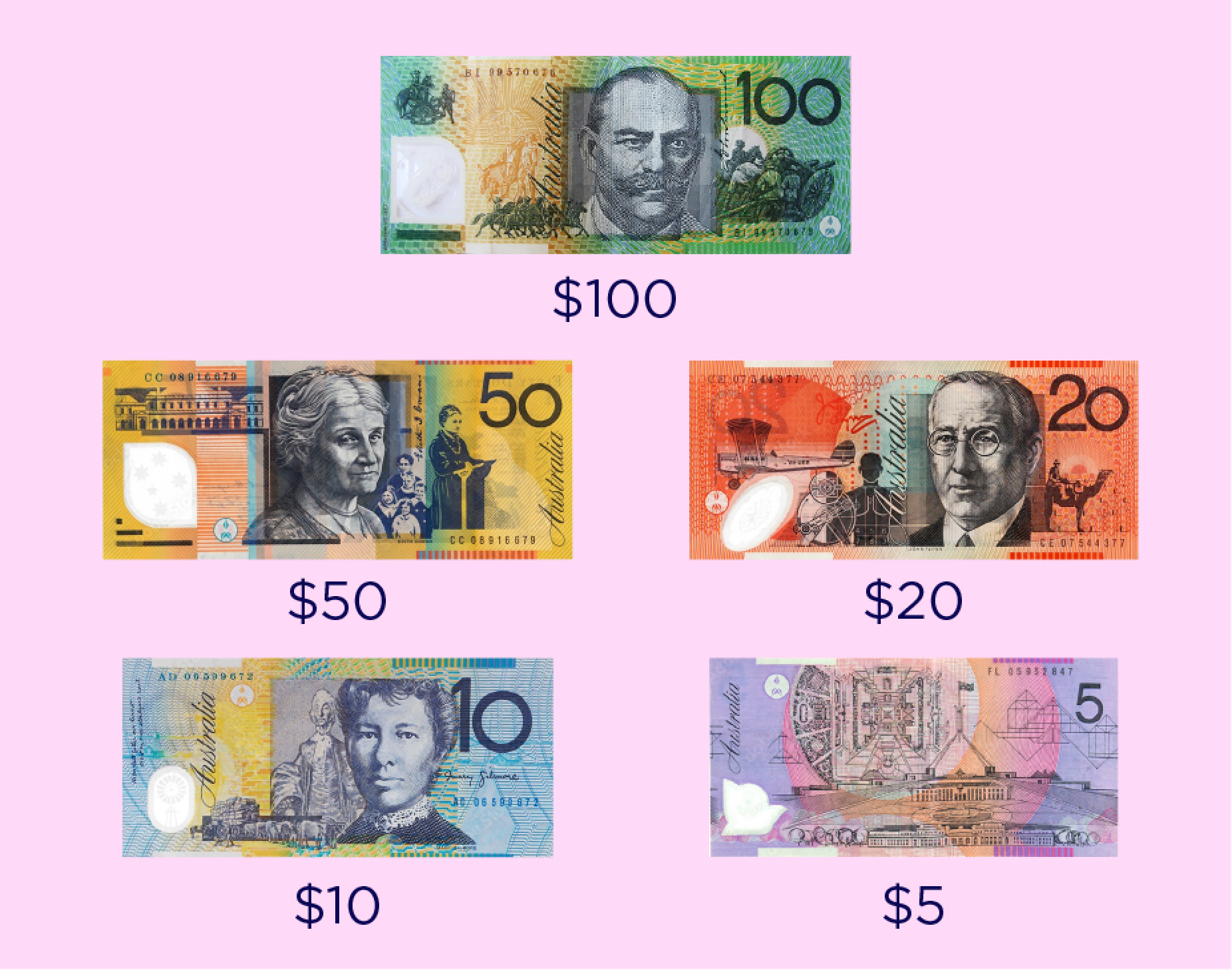
Each note has two sides. Australian notes all feature important Australians and special Australian designs. The five-dollar note currently features Queen Elizabeth II on one side. A new five-dollar note is being designed to honour the culture of First Australians.
There are five types of Australian notes
- 5 dollars
- 10 dollars
- 20 dollars
- 50 dollars
- 100 dollars
Fun facts about Australian notes
- Like coins, each note is a different size, so you can feel the difference when holding them.
- Each note also has a different colour. This way it is very hard to mix up the larger yellow 50-dollar note and the smaller purple five-dollar note!
- Australia was the first country to print notes on polymer plastic instead of paper. Plastic notes are stronger, harder to copy, and last longer than paper notes.
- There used to be one- and two-dollar notes. The one-dollar note was replaced with a coin in 1984, and the two-dollar note was replaced with a coin in 1988.
Understanding dollars ($) and cents (c)
One dollar is made up of 100 cents:
- 1 dollar equals 100 cents
- 2 dollars equal 200 cents
- 5 dollars equal 500 cents
'$' is the dollar symbol. It always goes before the number:
- $1
- $2
- $5
- $10
- $20
'c' is the cent symbol. It always goes after the number:
- 5c
- 10c
- 20c
- 50c
Writing dollars and cents as a number
When you are writing dollars and cents as a number together, you only need to use the dollar sign.
The dollar amount goes on the left before a decimal place, and the cent amount goes on the right after a decimal place.
For example:
- One dollar and 50 cents looks like this: $1.50
- Two dollars and five cents looks like this: $2.05
Practice on your own
Work out the below values as numbers on your own, then scroll to the bottom of the page for the answers.
- 3 dollars and 5 cents
- 5 dollars and 20 cents
- 20 dollars and 10 cents
Quiz time: How much money is in each jar?
Count the money in each jar, then scroll to the bottom of the page for the answers.
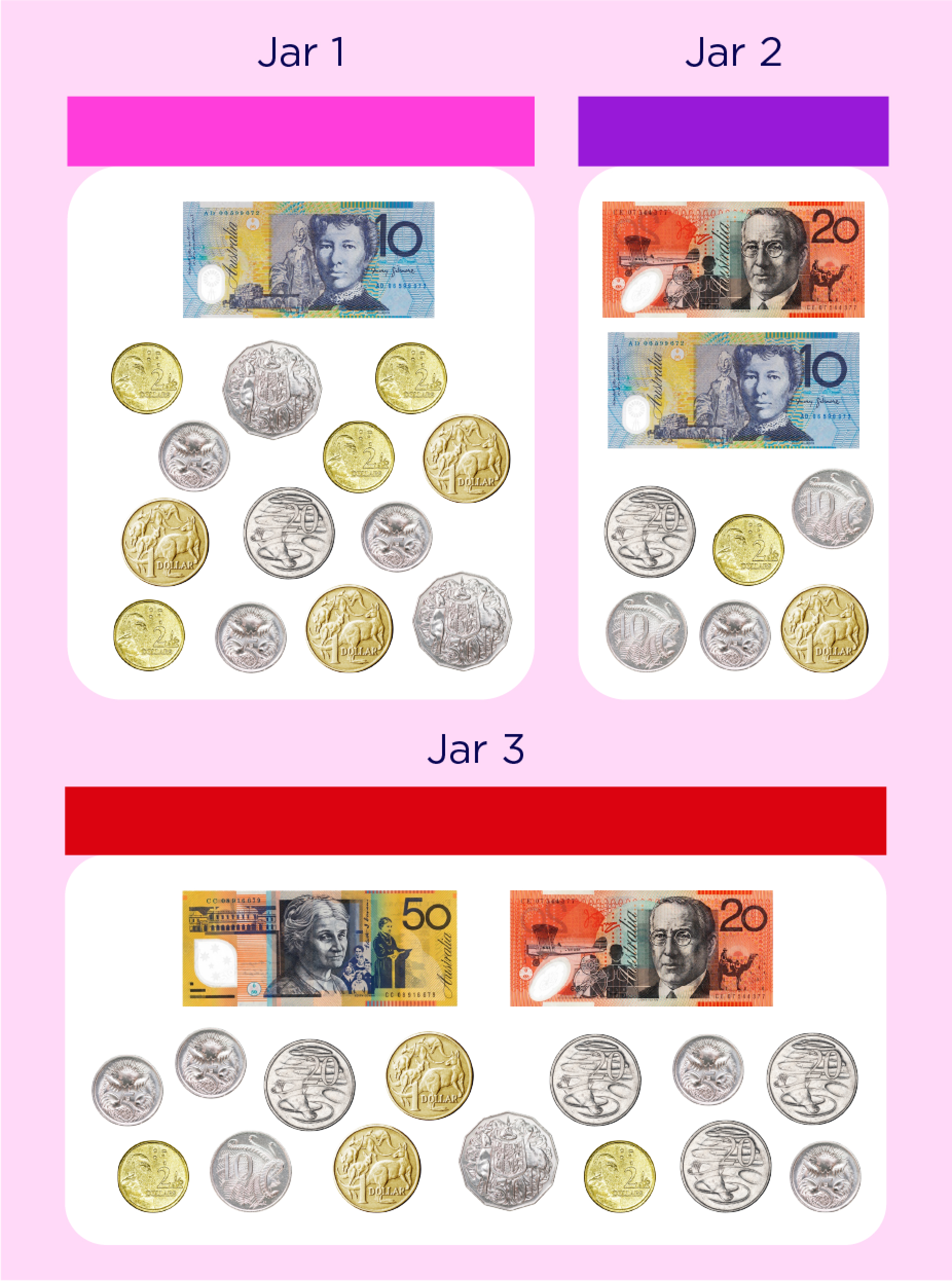
Answers:
Write out the values:
$3.05
$5.20
$20.10
Count the money in each jar answers:
Jar 1: $24.40
Jar 2: $35.60
Jar 3: $77.10
